Probing the expansion of the Universe
arnaud.de-mattia@cea.fr
hugo.simon@cea.fr
DPhP, Jan. 16th
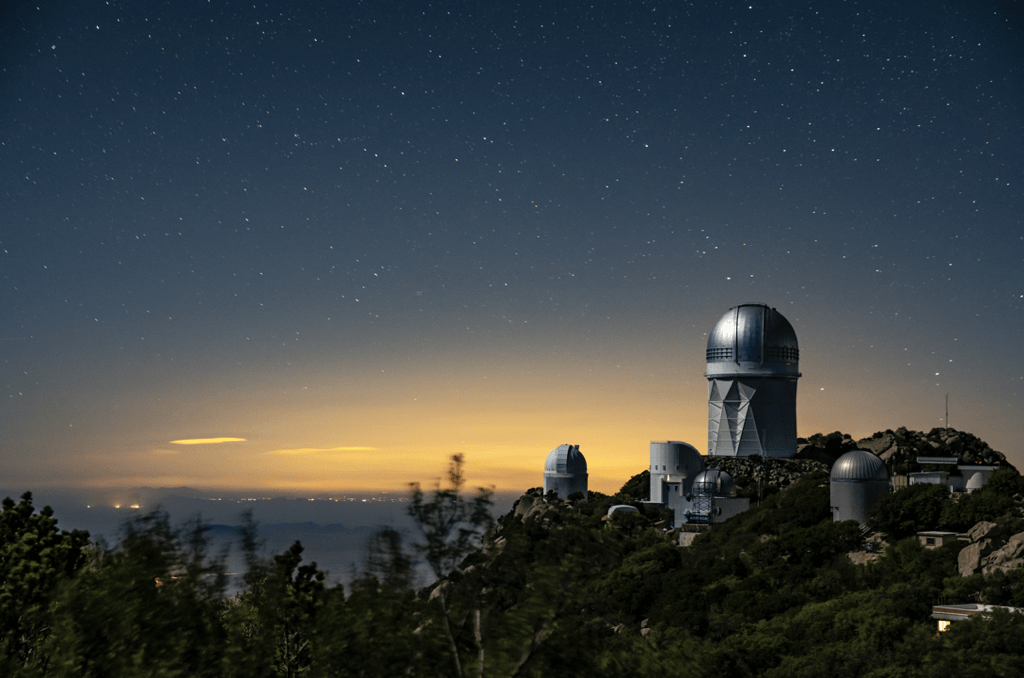
Probing the expansion of the Universe
In 1929: more distant galaxies are moving away from us more rapidly
Edwin Hubble at Mount Wilson
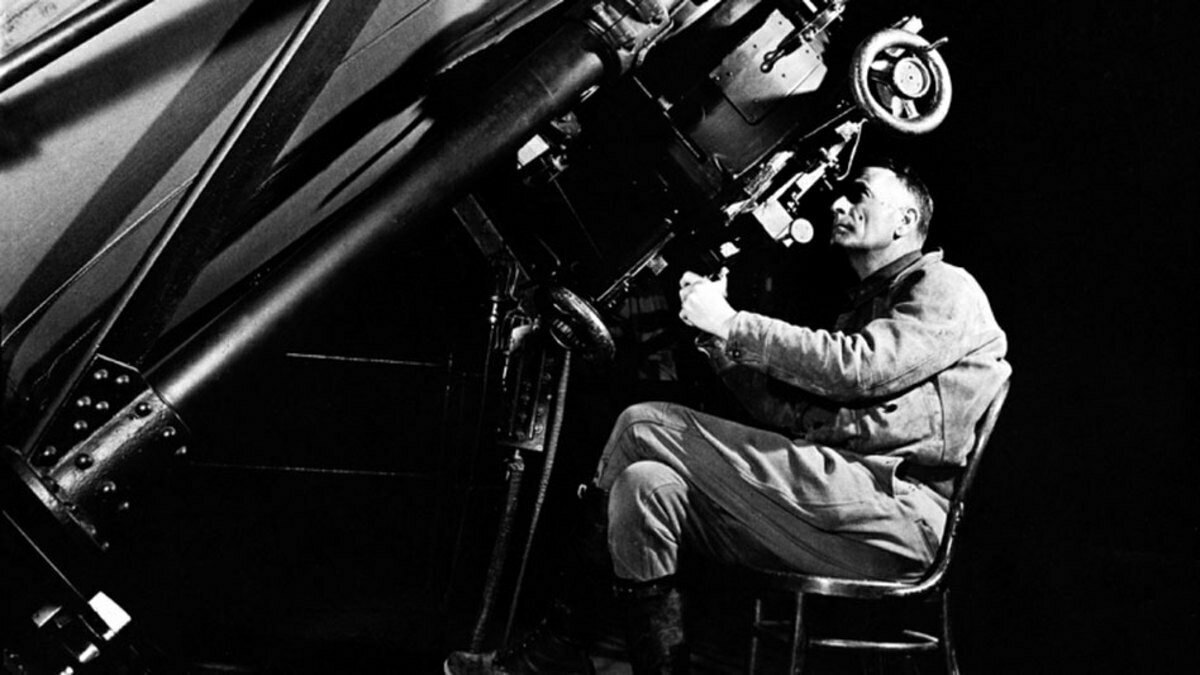
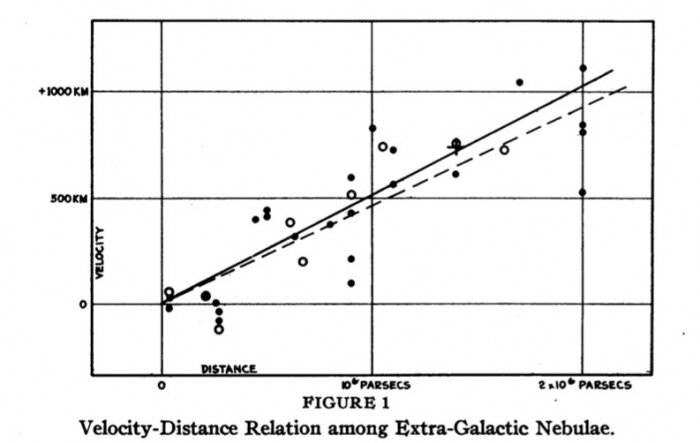
Probing the expansion of the Universe
In 1929: more distant galaxies are moving away from us more rapidly

\(\mathrm{velocity} = c \times \mathrm{redshift}\; z\)
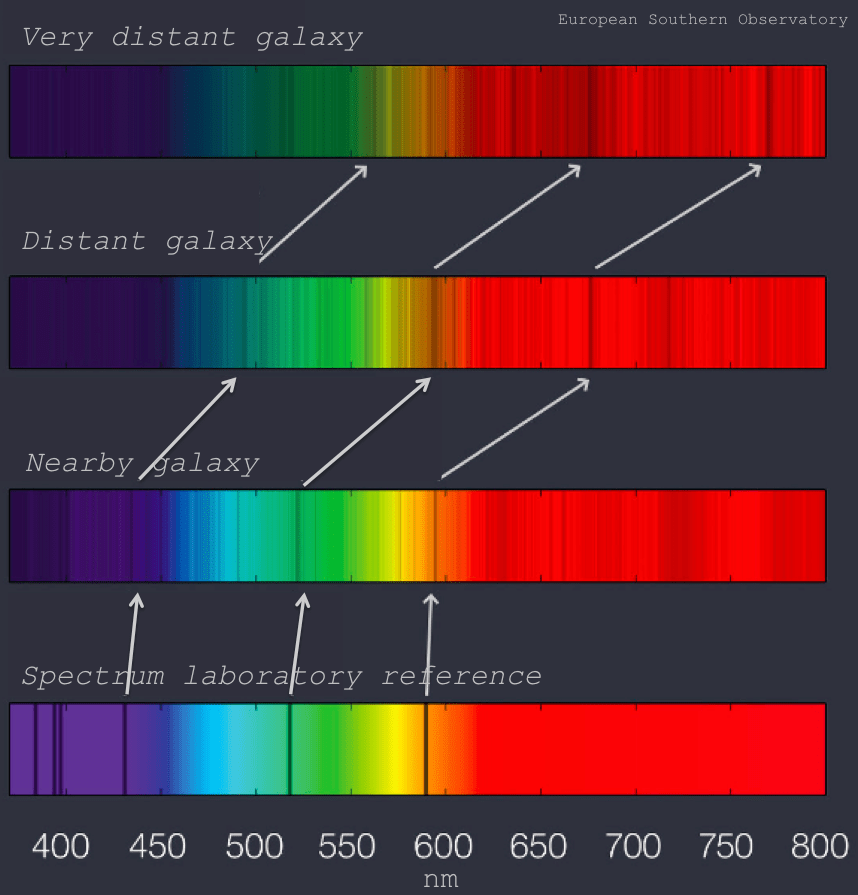
\(\mathrm{distance} \propto (\mathrm{apparent ~luminosity})^{-1}\)
\(\mathrm{slope} = H_0\)
Probing the expansion of the Universe
In 1998: the expansion of the Universe is accelerating!


This is
DARK
ENERGY!

\(\mathrm{magnitude} \propto\log(\mathrm{distance})\)
\(\mathrm{redshift}\; z\)
Probing the expansion of the Universe
In 2024: dark energy is not constant(?) in time!


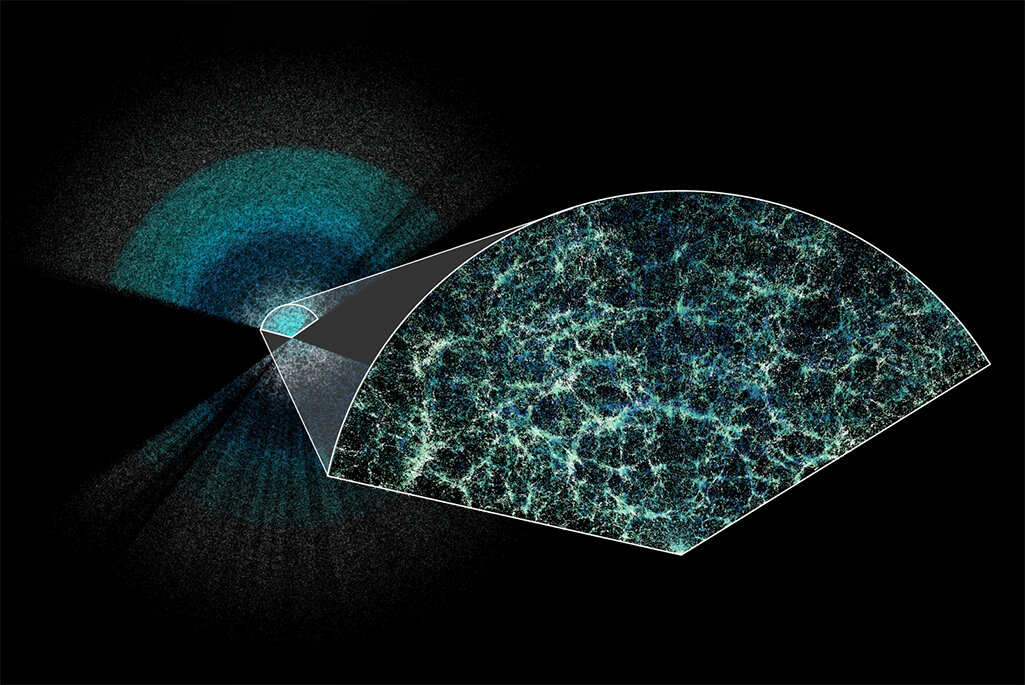

galaxies
\(\mathrm{redshift}\; z\)


Spectroscopic redshift surveys

10 years = \(10 \times \)

DESI Y5 galaxy samples

Bright Galaxies: 14M (SDSS: 600k)
0 < z < 0.4
LRG: 8M (SDSS: 1M)
0.4 < z < 0.8
ELG: 16M (SDSS: 200k)
0.6 < z < 1.6
QSO: 3M (SDSS: 500k)
Lya \(1.8 < z\)
Tracers \(0.8 < z < 2.1\)
Y5 \(\sim 40\)M galaxy redshifts!
\(z = 0.4\)
\(z = 0.8\)
\(z = 0\)
\(z = 1.6\)
\(z = 2.0\)
\(z = 3.0\)

Mayall Telescope - DESI instrument

Mayall Telescope
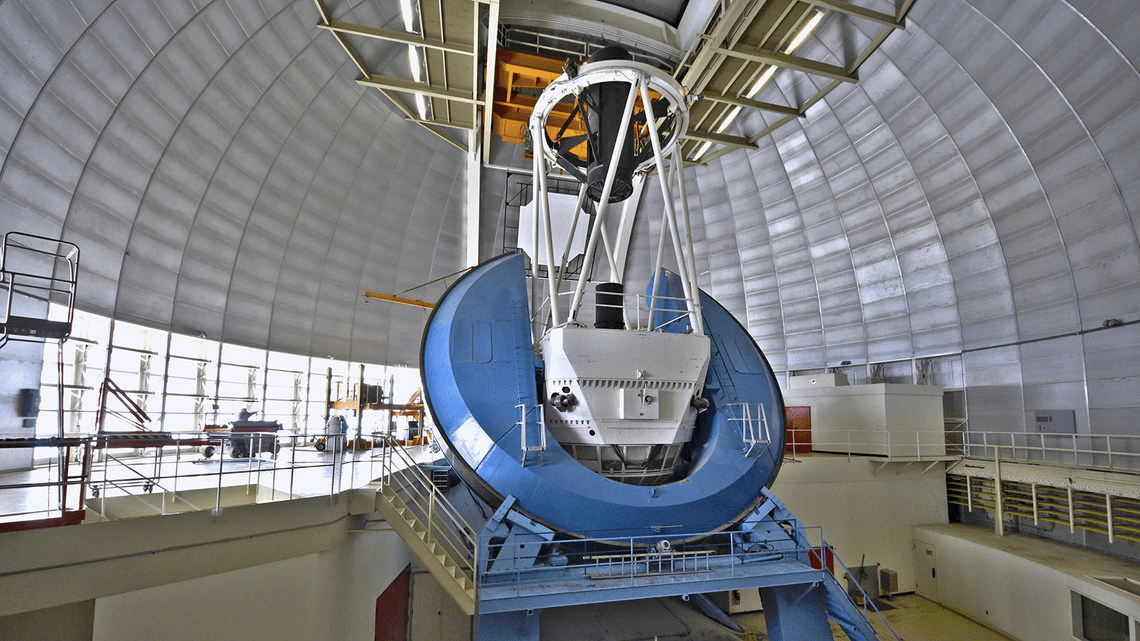
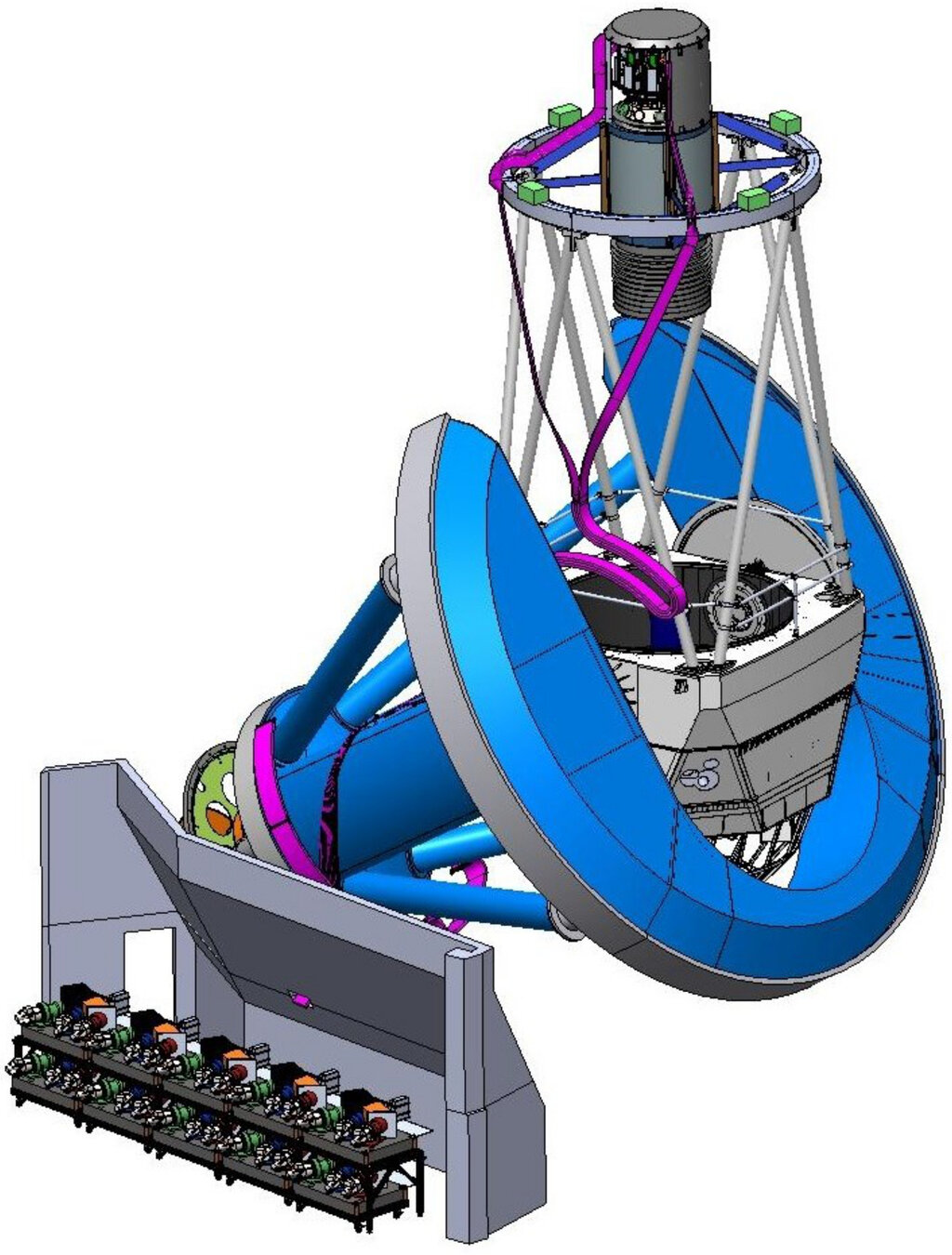
focal plane 5000 fibers
wide-field corrector
6 lenses, FoV \(\sim 8~\mathrm{deg}^{2}\)
Kitt Peak, AZ
4 m mirror

Mayall Telescope

focal plane 5000 fibers
fiber view camera
ten 3-channel spectrographs
49 m, 10-cable fiber run
Kitt Peak, AZ


Focal plane: 5000 robotic positioners

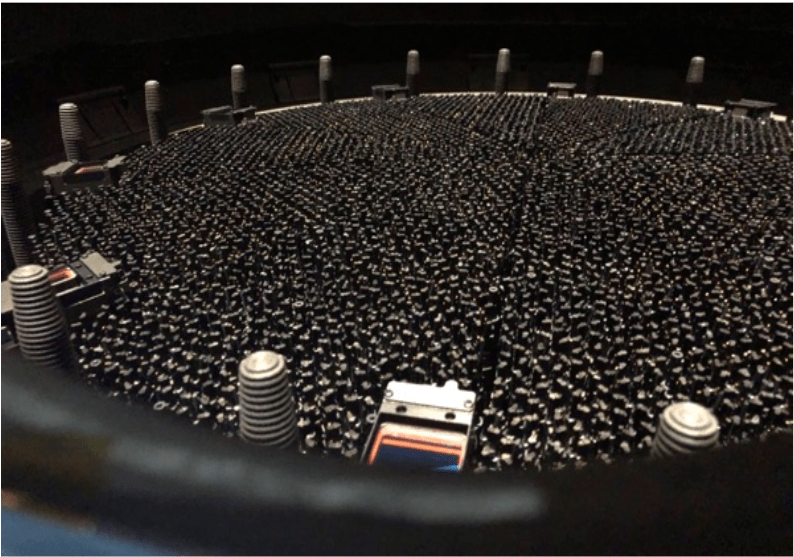
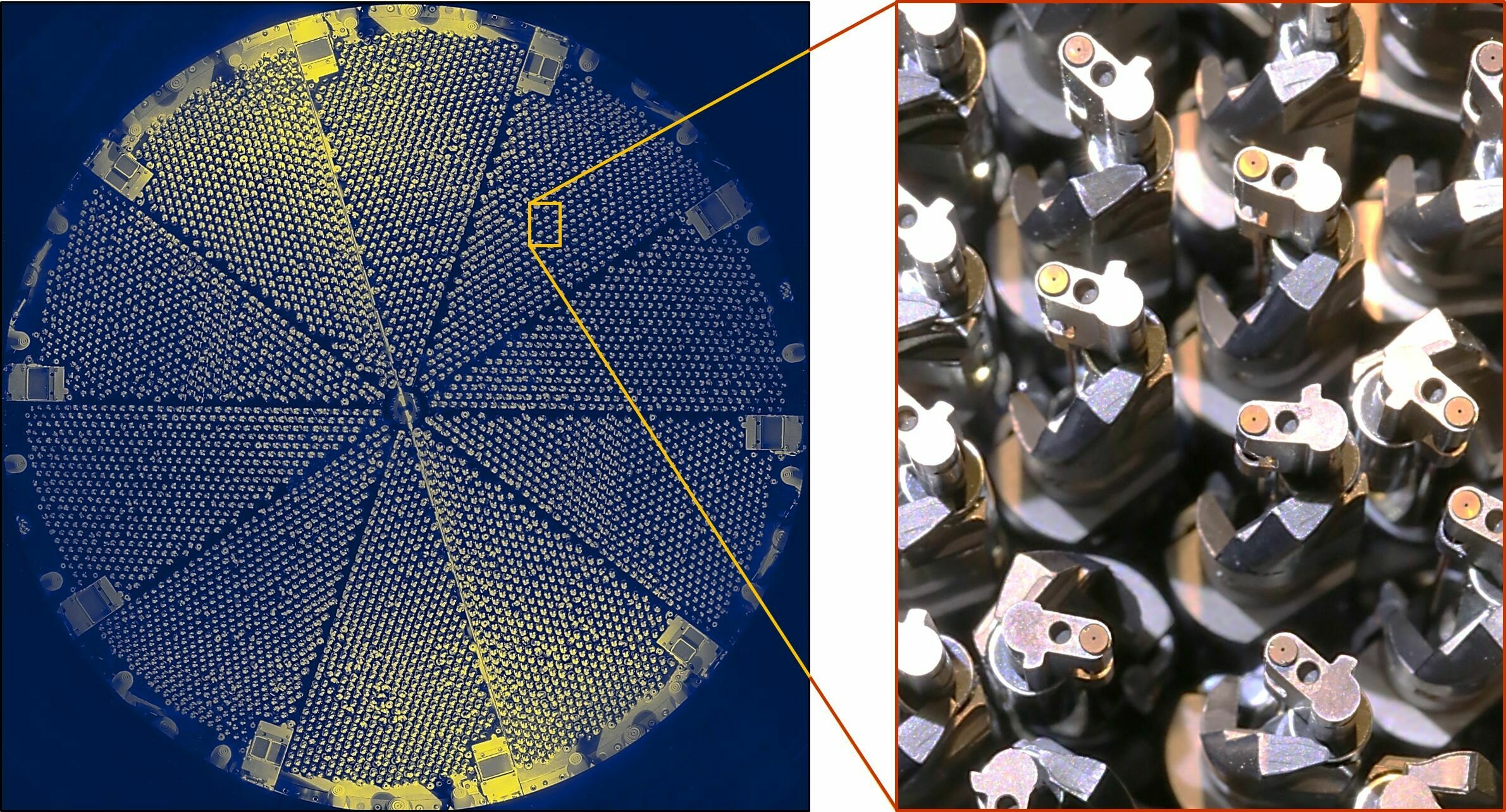
86 cm
0.1 mm
robots w/ 2 rotation axes
position spectroscopic fibers

Spectroscopic pipeline

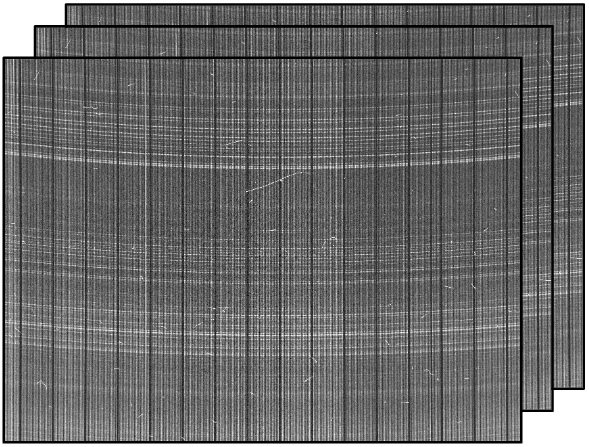
wavelength
fiber number
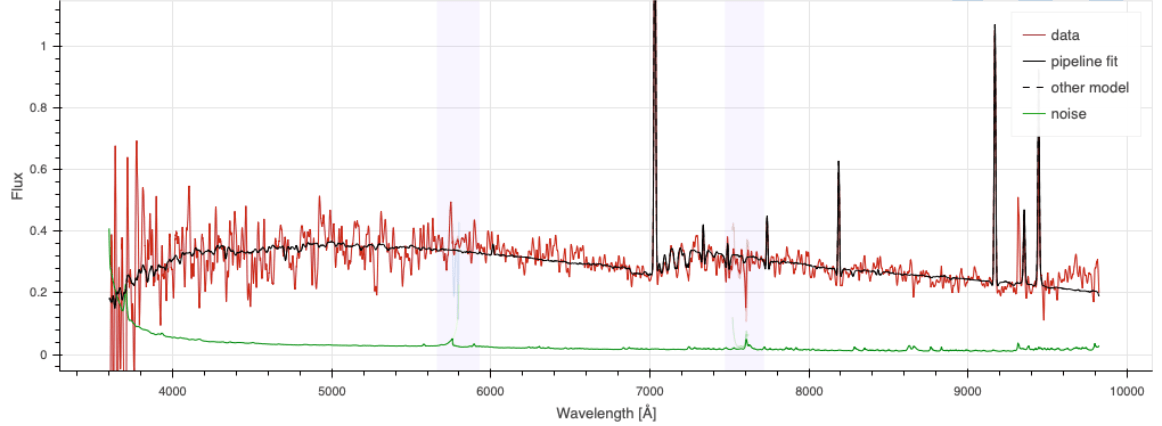
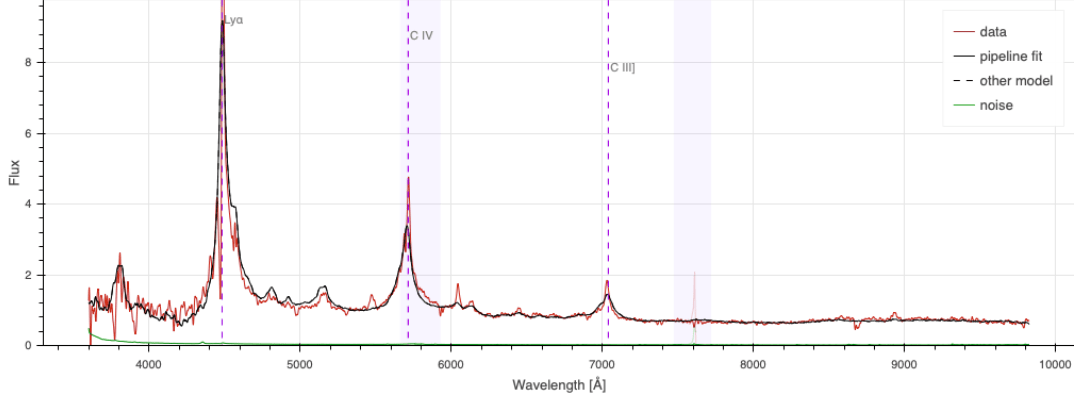
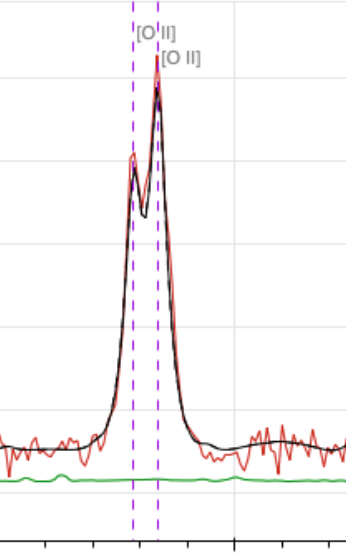
\(z = 2.1\) QSO
\(z = 0.9\) ELG
Ly\(\alpha\)
CIV
CIII
[OII] doublet at \(3727 \AA\) up to \(z = 1.6\)
[OII]
Ly\(\alpha\) at \(1216 \AA\) down to \(z = 2.0\)
Probing the expansion of the Universe = measuring how physical
distances change with time (cosmological redshift)
Standard ruler
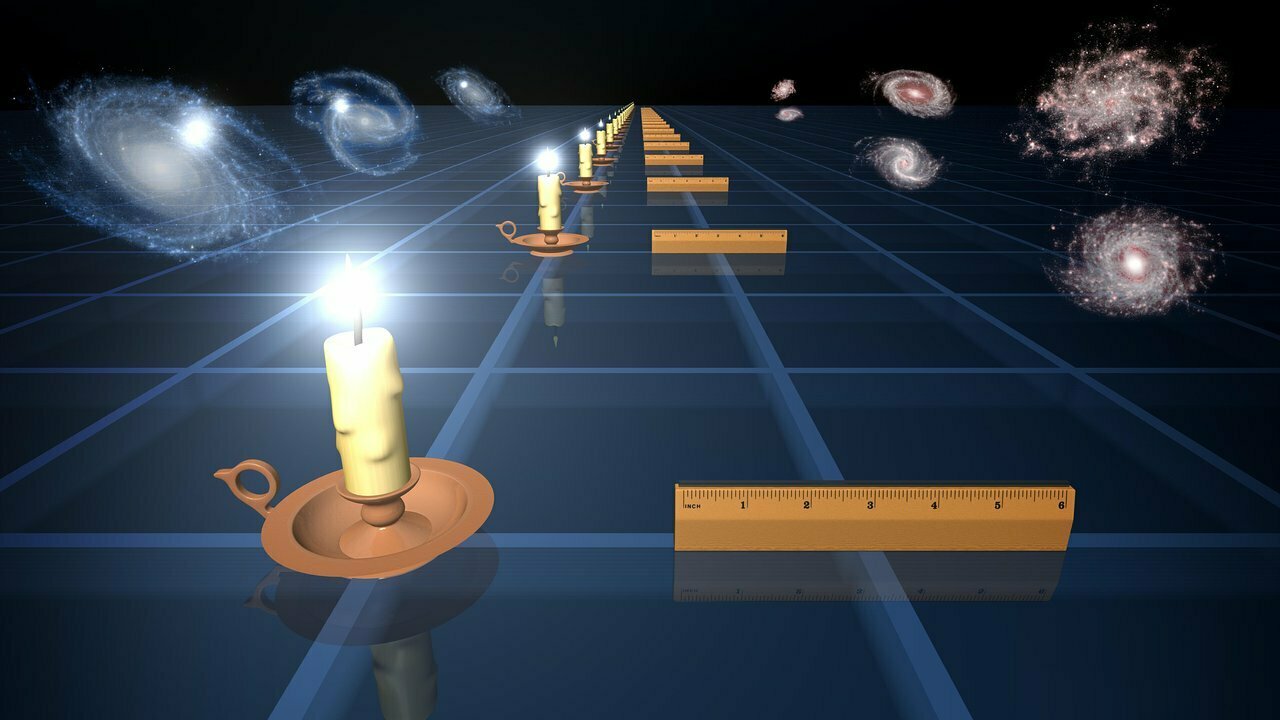
SN1a are standard
candles
standard intrinsic
luminosity
+
flux measurement
=
distance at given \(z\)
standard scale
+
angle measurement
=
distance at given \(z\)
Standard ruler
Is there any standard length scale
in the distribution of galaxies?
Probing the expansion of the Universe = measuring how physical
distances change with time (cosmological redshift)

Baryon acoustic oscillations
In the early Universe, plasma of baryons and photons tightly coupled through Thomson diffusion
CAASTRO, https://www.youtube.com/watch?v=jpXuYc-wzk4. WiggleZ team, Swinburne University




DESI Y1 BAO measurements
(compressed) data

BAO peak
its position = "size of the bubble"
today
Big Bang


DESI Y1 BAO measurements
(compressed) data

BAO peak

high probability region (68%)
fractional matter density (the rest is ~ dark energy)
cosmological parameters
cosmological inference
Hubble constant \(\times\) sound horizon scale

DESI Y1 BAO measurements



DESI Y1 BAO measurements



DESI Y1 BAO measurements



DESI Y1 BAO measurements


DESI Y1 BAO measurements


add dynamical dark energy w/ 2 extra parameters: \(w_0, w_a\)
cosmological constant \(\Lambda\) (our best model so far)
\(3.9\sigma\) = probability of 0.01%

Many other analyses possible!
In November, we released new measurements of how fast galaxies cluster together: test of general relativity on cosmic scales
DESI measurements

general relativity